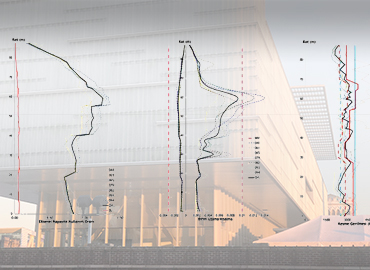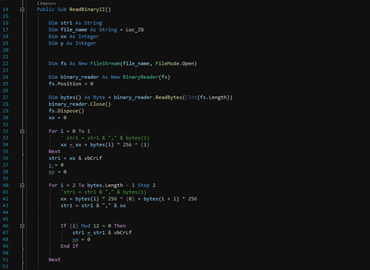Earthquake Engineering
In the earthquake engineering discipline that we have served since 1990, our main goal is to produce innovative and safe solutions to achieve the intended performance and damage levels of existing and new structures under seismic impact, considering the current engineering knowledge and regulations.
1. Evaluation of Existing Buildings
In this context, the objective is to determine the performance of existing buildings under seismic loads as per the procedures determined within the framework of international and national codes. For this purpose, the following services are performed: (a) inspection of the existing project designs of structures, (b) preparing building survey in order to determine geometric characteristics and existing damage of the structures, (c) conducting destructive and non-destructive material tests to determine the material properties of the structures, (d) Performing soil survey to determine the geotechnical and geophysical parameters of the ground where the structures are constructed, (e) preparing the analysis model of a structure using all information obtained and determining its earthquake performance using the dynamic methods which are linear static, linear modal, nonlinear static or nonlinear dynamic, and (f) reporting the results and recommendations in a way that can be interpreted by the employer. If desired, the scope of the assessment work can be expanded to determine the performance of the buildings under various earthquake levels and advanced parameters such as cost, downtime, and building vulnerability, fragility.
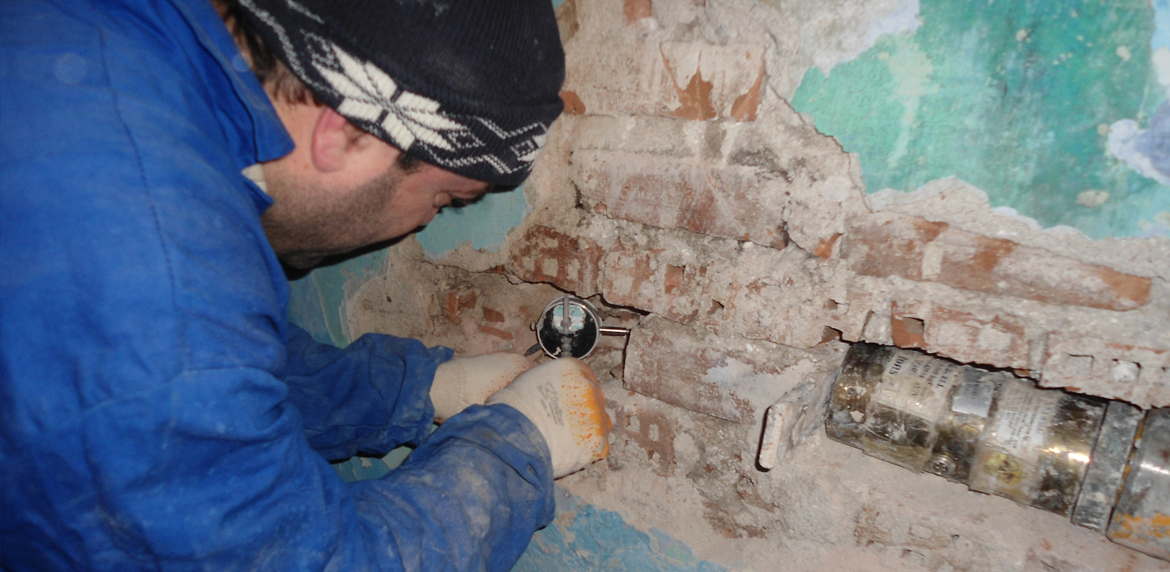
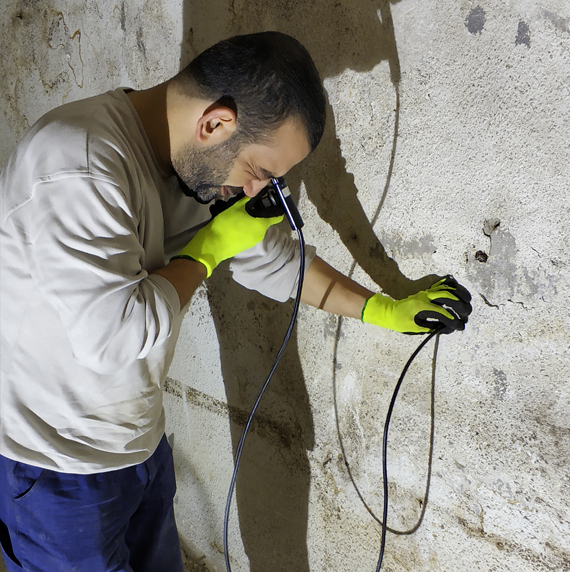
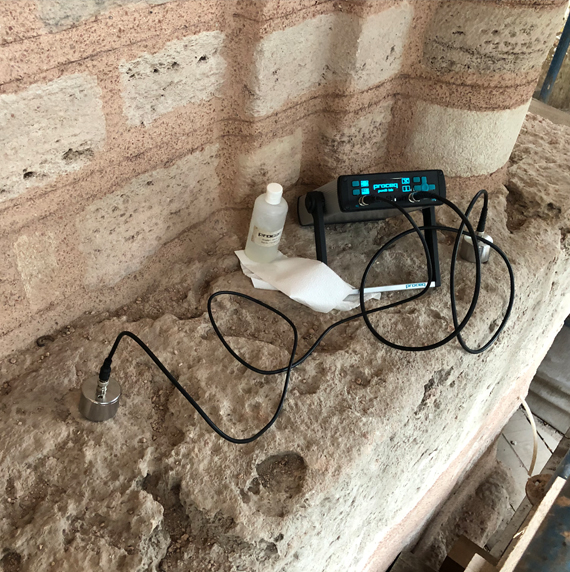
2. Evaluation of Historical Structures
In this context, the objective is to determine the performance of historical buildings under seismic loads in accordance with the procedures determined within the framework of international and national codes and guidelines. For this purpose, the following services are performed: (a) evaluating the architectural survey and restitution projects of the structure, obtaining information about the history of the building, (b) preparing building survey in order to determine sensitive geometric characteristics and existing damage of the structure, using 3 dimensional laser scanning equipment if necessary, (c) conducting destructive and non-destructive material tests to determine the material mechanical properties used in the structures and the pathological and chemical parameters, (d) performing soil survey to determine the geotechnical and geophysical parameters of the ground where the structures are constructed, (e) performing GPR radar scan to detect the historical remains or elements which are under the structure, (f) preparing the analysis model of a structure using all information obtained and determining its earthquake performance using the dynamic methods which are linear static, linear modal, nonlinear static or nonlinear dynamic, and (g) reporting the results and recommendations in a way that can be interpreted by the employer.
3. Building Stock Prioritization Works
Execution of detailed seismic analysis work for the entire building stock of the owner may lead to unnecessary effort and time. Accordingly, for large building stocks, a preliminary assessment containing a subset of the detailed seismic analysis work may be executed at the beginning of a project to prioritize the entire stock and plan accordingly.
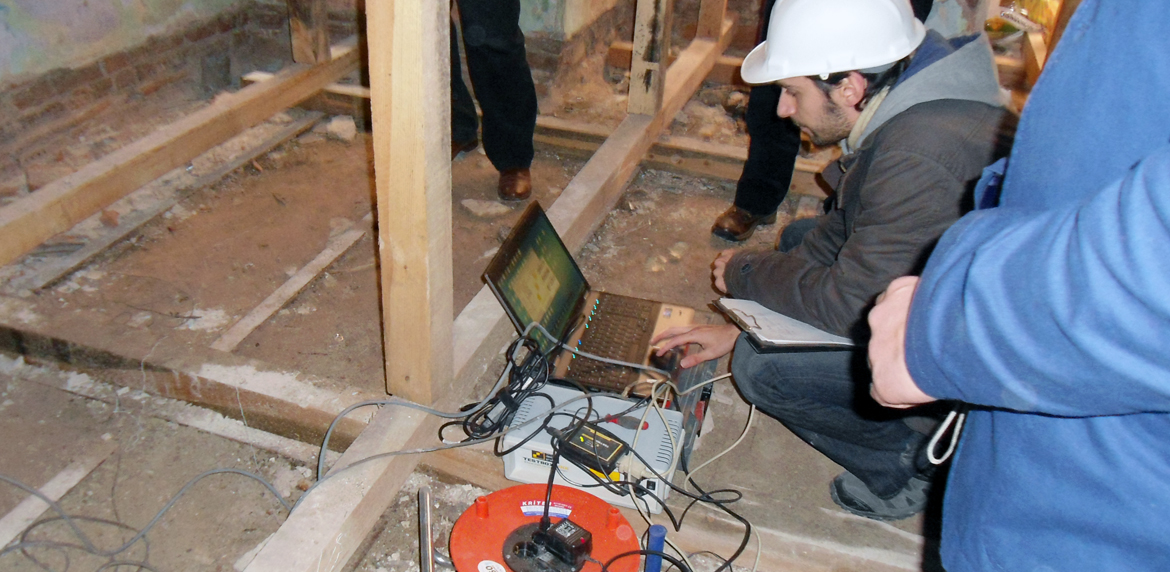

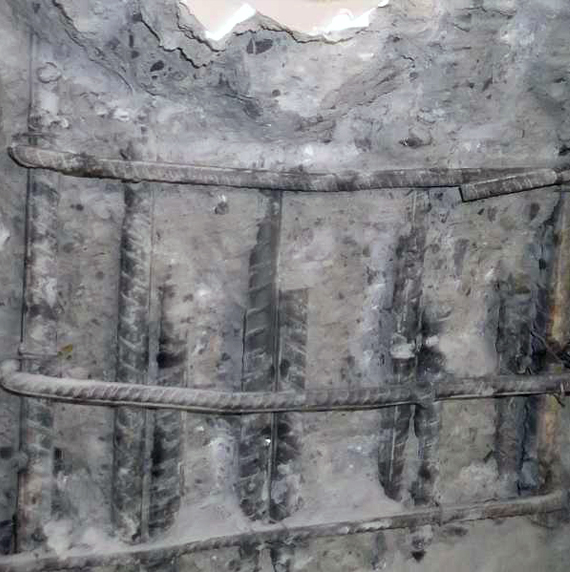
4. Preparation of Seismic Retrofit Documents
In this respect, in order to eliminate the deficiencies discovered during the evaluation studies and to achieve the desired earthquake performance, various services are carried out including preparation of a retrofitting model based on the architectural and usage purposes of the buildings and preparation of the retrofitting project employing all information obtained and the dynamic methods which are linear static, linear modal, nonlinear static or nonlinear dynamic, and preparation of the cost estimates using the implementation technical specifications, quantities, and market conditions. Where needed, various other services are also provided within this scope including alternative reinforcement projects, project design of non-structural engineering services (architectural, electrical, mechanical, etc.), and construction supervision.
5. Evaluation and Optimization of Lateral Force Resisting Systems of New Structures
In this context, the Lateral force resisting systems of new structures, which are generally designed with linear methods, are evaluated with advanced analysis methods and software within the scope of "performance-based design" services. With this service, the objective is to optimize the structural system of the building according to the parameters requested by the employer (cost, size, area, effects on the foundation, etc.) and to determine the real performance level of the building.
6. Inspection of Nonstructural Elements
In this context, the services provided pursuant to the national and international codes include seismic inspection of non-structural elements such as architectural components, pallet racks, mechanical equipment, etc., which are critical for functioning but not necessarily a part of the primary load-bearing component of the building.
7. Advanced Earthquake Engineering Services
Within the scope of advanced earthquake engineering, in addition to analysis services such as nonlinear time-history analysis (NTHA), nonlinear dynamic soil-structure interaction (Nonlinear SSI), Nonlinear Coupled Analysis and Fluid Structure Interaction, the design works provided include Tuned Mass Damper (TMD), passive energy dampening systems (viscous damper, friction damper) and seismic isolation systems as well as forced/ambient vibration measurement, in situ dynamic verification, and structural health services are provided.
